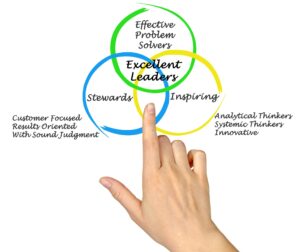I work with a number of companies that have someone at the helm who envisions the future and another person who makes that future come to life. In EOS® we refer to the former as a Visionary, and the latter as an Integrator. And these two people could not be any more different.
Visionaries have a unique perspective on the world. They ask “what if”? and “why not?” They have 12 ideas every week. Some of them may not be a fit with your company’s Core Focus™. However, a few are truly brilliant and take your company to the next level. For this reason alone, a Visionary is invaluable.
Visionaries are remarkable with external relationships — important clients, vendors, and industry associations. And they usually excel at closing the big deals.
They have the ability to envision what the next generation of a service or product will look like. They don’t need diagrams – they see it in their minds’ eye. They push for more. They reach for more. These are not learned skills. This is how a Visionary is genetically encoded. They see the future.
Integrators, on the other hand, are the glue in your company. An Integrator’s role and skills are quite unique. They execute the company vision. In other words, they take the Visionary’s vision and bring it to life by drawing the map and making sure everyone knows the way.
They run the day-to-day and remove obstacles so people can execute. They obsess about organizational clarity and getting everyone moving in the same direction. They make sure all processes are followed consistently; ensure the company’s weekly metrics are achieved. They are the voice of reason – filtering all of the Visionary’s ideas, which eliminates hurdles, stumbling blocks, and challenges for the leadership team.
A Visionary and an Integrator could not be more different. Do you know which one you are?
EOS®Founder Gino Wickman wrote a book entitled, “Traction” which goes into greater detail about the differences between the Visionary and Integrator and how they both fit into the Accountability Chart. It is addressed in chapter four, The People Component, which is one of the Six Key Components™ to implementing EOS®in your organization.
I highly recommend reading “Traction” if you are interested in learning more about EOS®or implementing it in your company. If you’d like to get a taste of what the book is all about, you can download the first chapter, which includes the table of contents and the introduction.
I would love the opportunity to talk with you more about EOS®and these two important types of leaders. Please fill out the consult form below to request a free 15-minute phone consultation with me. I can help you determine if you are a Visionary or Integrator — if you don’t already know — and discuss how EOS®can improve your business.





